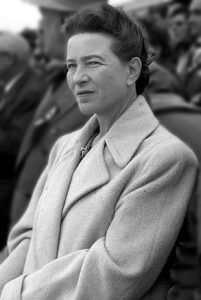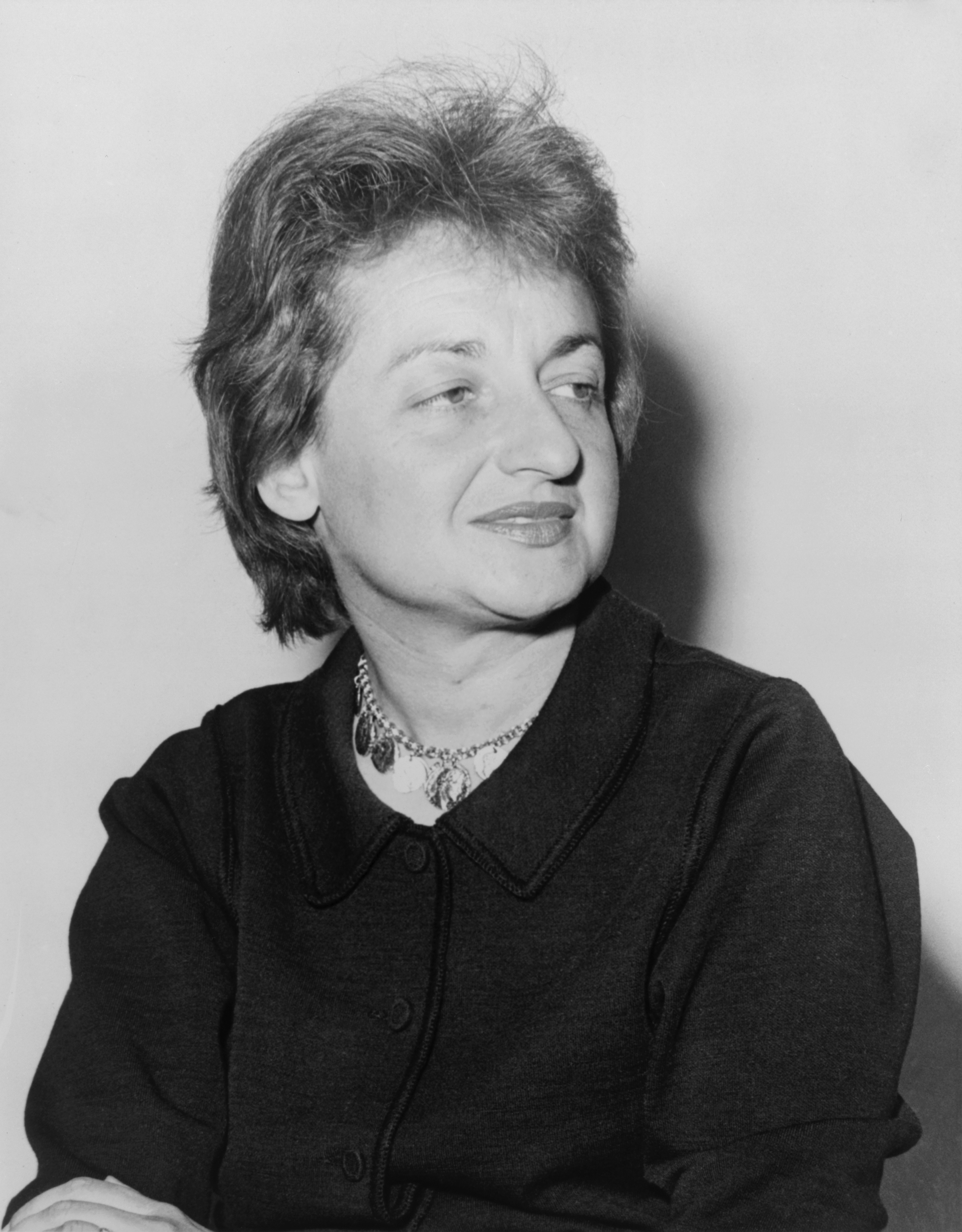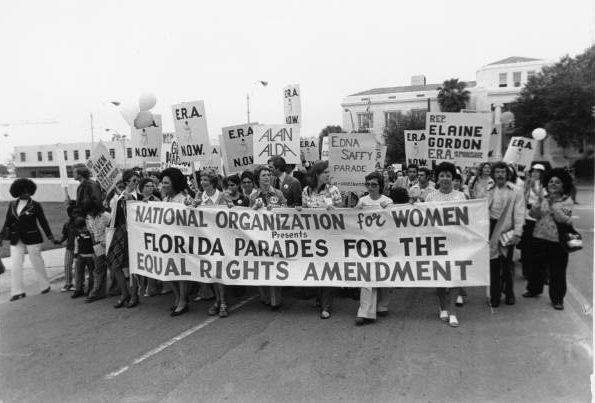14.2.2.1 Second Wave Theorists
Valentin Quintus Nicolescu and Gregory Millard

Simone de Beauvoir’s The Second Sex (Le deuxième sexe, 1949), published just five years after women in France obtained their right to vote, was translated into English in 1953 and rapidly became a canonical feminist text. The Second Sex offered two main arguments. One concerned the ideational relation that regarded men and women as opposites. A woman is “defined and differentiated with reference to man and not he with reference to her; she is the incidental, the inessential as opposed to the essential. He is the Subject, he is the Absolute - she is the Other” (de Beauvoir, 1956, p. 16). The second key point concerned femininity as what we would now call a "social construct." “One is not born, but rather becomes, a woman. No biological, psychological, or economic fate determines the figure that the human female presents in society; it is civilization as a whole that produces this creature … which is described as feminine” (de Beauvoir, 1956, p. 273). De Beauvoir attacked the prevailing patriarchal order with eye-opening arguments from history, philosophy, biology and economics, helping set the post-war feminist agenda by asking women to transcend their current situation, enter the workforce, seek economic justice, and strive for the betterment of women by actively engaging in intellectual endeavors. She primarily spoke to white, middle-class suburbanite women but nevertheless helped ignite a second feminist “wave” targeting the cultural, informal and institutional patriarchal infrastructure.
Carol Hanisch: “The Personal is Political”
Apart from being a philosopher and a feminist writer, de Beauvoir became deeply involved in the feminist movement as an activist in the 1970s by writing the Manifesto of the 343 (Price in Wetherly, 2017, p. 263) and by joining and presiding La ligue des droits des femmes (the League for the Rights of Women) in 1974. The Manifesto (also known as the "Manifesto of the 343 Sluts"), published in 1971, was a short but powerful text in which 343 French women condemned banning abortion and contraceptive access in France and stepped forward in admitting that they were forced to have illegal abortions in an open act of civil disobedience that would have condemned them to prison: “One million women in France have abortions every year. Condemned to secrecy, they do so in dangerous conditions, while under medical supervision, this is one of the simplest procedures. Society is silencing these millions of women. I declare that I am one of them. I declare that I have had an abortion. Just as we demand free access to contraception, we demand the freedom to have an abortion” (Le Nouvel Observateur, 1971).
The Second Wave Agenda
| family and gender roles | The 1950s and 1960s traditionalist view of family (conspicuously named ‘nuclear family’ in the 1950s) and gender roles represented the first issue of debate for the second wave feminists. This engendered the call for equality at home and also for the women’s right to choose in terms of reproductive and sexual health care. |
| workplace equality | Particularly aiming towards equal pay for equal work and against workplace discrimination, which included sexual harassment. |
| race and class | Meetings between middle-class white women and their own otherness brought about the debate regarding feminism through the lens of both race and class. |
| sexual revolution | The banner of the sexual revolution, which spanned from issues regarding sexual liberation and repression in the family (e.g. see the double burden) to the acid contestation of male-imposed beauty standards that objectified and commodified women’s bodies, at the same time forcing them to compete for men’s attention as a means to social status and appreciation in a patriarchal society. |
| empowerment | Through civic activism and organizing, women connected and discuss ways of empowerment and constructing a solid, reliable community. |

Building on de Beauvoir’s foundations, Betty Friedan (1921–2006) published in 1963 The Feminine Mystique, marking a transition from the first wave’s "woman question" to the Second Wave’s "problem that has no name:" “the problem lay buried, unspoken, for many years in the minds of American women. It was a strange stirring, a sense of dissatisfaction, a yearning that women suffered in the middle of the twentieth century in the United States. Each suburban wife struggled with it alone. As she made the beds, shopped groceries, matched slipcover material, ate peanut butter sandwiches with her children, chauffeured Cub Scouts and Brownies, lay beside her husband at night – she was afraid to ask even to herself the silent question – ‘Is this all?’” (Friedan, 1977, p. 11).
Friedan critiqued the dissonant status quo that excluded women from accessing the benefits of the first wave’s struggles. In effect, she pointed out that equal rights were not creating full opportunity, arguing that the women’s movement had to focus on social norms that formed structures of prejudice against women, impeding them from actually benefiting from the gains won by the first wave.

Friedan was not only a theorist, but also an activist, helping to found the National Organization of Women (NOW), a major force in the feminist movement (Baradat & Philips, 2017, p. 317). In 1967, the NOW Conference adopted the Bill of Rights document, which called for eight essential rights: a constitutional amendment guaranteeing equal rights for American women, a ban on sex discrimination in the labor market, maternity leave rights in employment and in social security benefits, tax deductions for home and care expenses for working parents, publicly supported child day care centers, equal and unsegregated education, job training and allowance opportunities for women living in poverty, and the right of women to control their reproductive lives. NOW remains deeply engaged in pushing forward the women’s agenda in the US through street activism, lobbying, boycotts and electoral campaigns. The second wave did not occur in isolation; it was informed by other important social movements of the 1960s in particular, such as the civil rights movement and the peace movement. Within this context, predominantly white, middle-class feminists encountered other women who were different in terms of their class, race, or sexuality and consequently their political standpoints. This brought to light a number of issues and grievances that had been obscured by the preeminence of middle-class white women in the feminist movement. The ensuing diversity of movements and approaches within the second wave led to the intersectionality-focused approach that would define the third wave in the 1990s.
Media Attributions
- Simone de Beauvoir in Beijing 1955 © 刘东 鳌 (Liu Dong'ao) is licensed under a CC0 (Creative Commons Zero) license
- Betty Friedan 1960 © Fred Palumbo is licensed under a Public Domain license
- ERA March from Governor’s mansion © Donn Dughi is licensed under a Public Domain license

